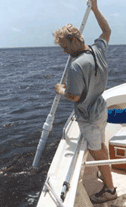MichaelJ
Member
Thanks Michael, if I get the pH back up is that sufficient to control those traces or is the substrate which will be four years in the tank come August had its sa
I’m not entirely sure what I would advise. For sure, I wouldn’t want to be in a situation where a change in pH could cause loss of livestock - which never happens in a healthy tank unless the change is extreme. If it indeed was a release of toxins from the substrate then you would have to get rid of those toxins. If you still have livestock in the tank and increase the pH your high TAN level could be potentially lethal. If it would be me, and I couldn’t find another plausible reason such as illness, I would probably tear it down and rebuild the tank. You have several tanks so I’m sure you could temporarily house any remaining livestock.
Cheers,
Michael




